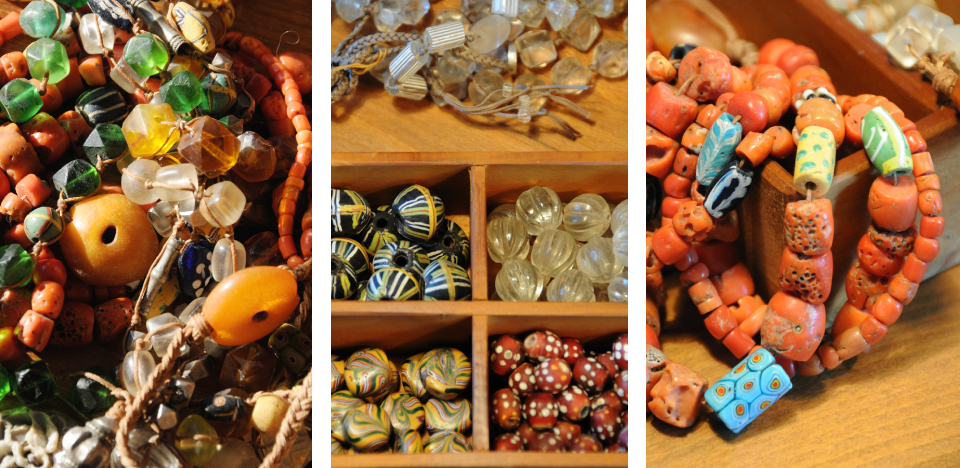Antique beads are tiny, enduring and beautiful works of art which connect us to the history of the human race. They reflect the desire
of people everywhere to create and adorn themselves with fine objects which emulate human experience through time.
Historically, beads have influenced the growth of early trade routes, having been used as a form of barter; they secured marriages;
provided a sense of healing and protective comfort; celebrated important seasonal changes; and commemorated victories in wartime.
Numerous cultures across the globe still integrate beads into their everyday and spiritual lives.
The term “trade beads” typically applies to beads made predominantly in Venice and Bohemia, as well as other European countries,
from the late 1400s through to the early 1900s, and traded in Africa and the Americas. Many of these beads have been identified as
having been made in Germany, France and the Netherlands. Nevertheless, most of these beads, although historically produced in
Europe, are commonly associated with West Africa, as they were the most sought after exchange unit in the African trade.
“Venetian trade beads” are among the most popular and widely recognizable beads in the world. Originating in Venice during the 1500s,
these beads, including chevrons, white hearts, millefioris and fancies, set the standard for the modern glass beadmaking industry.
The popularity of these beads was revived in the late 1960s, when they started being exported from Africa into the United States and
Europe. The term “trade beads” became very popular during this period and is still used as a bead reference.
Today these beads are more popular and collectable than ever. Thousands of them are in private collections, a favorite of collectors
worldwide. African bead traders have to go deeper and deeper into Africa to find more of these beads, while many styles which were
readily available just five years ago, can no longer be traced today.
Exceptional museum collections of trade beads can be found at the Museum of Mankind in London, the Pitt Rivers Museum in Oxford,
the Royal Museum for Central Africa in Tervuren, Belgium, the Murano Glass Museum in Venice, the Royal Tropical Institute in
Amsterdam, the Bead Museum in Glendale, Arizona, and the Picard Trade Bead Museum in California, to name a few.
Nevertheless, beads are more than just objects in a museum. Drops of beauty with a long history kept inside their elaborate glass shell,
they entice the eye to gaze at them and the hand to feel them, ultimately provoking the desire to be worn.










































